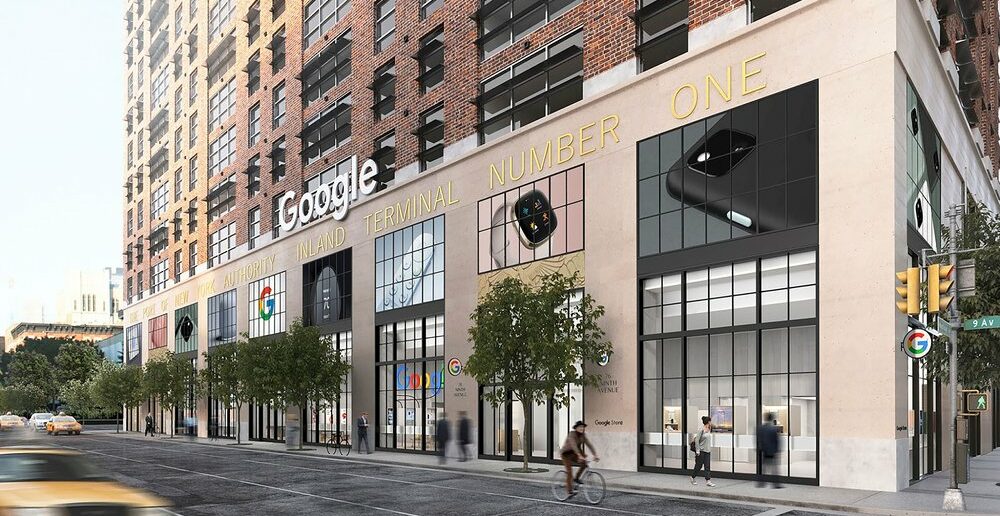Despite the unprecedented challenges facing the retail industry, global retail sales proved resilient in 2020. Consumers shopped online in ever larger numbers, an acceleration of a pre-existing trend.
According to Deloitte, the first half of 2020 saw five years of growth in online retail market share in a matter of weeks. Even when non-essential stores reopened, footfall has been generally down on 2019, albeit that numbers and patterns are patchy.
Shoppers are, by and large, shopping less frequently but with more purpose – so visits are down but basket size is up. This is perhaps inevitable. After over a year in lockdown or living under restrictions, people are bound to feel more cautious as they re-engage with their previous lifestyles.
The question for the retail industry is what sticks and what changes.
Our special report looks at the latest picture for retail, food & beverage and leisure and includes case studies on the new Google store, Kingfisher’s resurgence in the booming DIY sector and the technical innovation being introduced by X5 Group.
The pace of change has been too much for some legacy retailers to withstand and there have been a number of high profile administrations and record numbers of store closures and job losses, notably in the US and UK. There is a strong argument that many of those names who have disappeared or been acquired were likely to have failed in the coming years anyway and that the pandemic accelerated retail market trends rather than changed this direction.

Mixed use retail and leisure: What happens next? – White Paper
Data from Deloitte’s Global Consumer Tracker shows that 1 in 10 consumers across Europe now shop online for food (close to 30% in the UK). Moreover, the lines between home and office have blurred, with the home becoming an office, a classroom and a gym. Consumption patterns have changed with more calories consumed in the home and growth in spending on furniture, garden products and home gym equipment. Again, the trend towards home was already evident before the pandemic.
And despite the turmoil, many of the world’s largest retailers were well placed to move forwards during the pandemic as they are essential retailers. Deloitte and the National Retail Federation’s annual Global Powers of Retailing 2021 revealed the top 10 as: Walmart (US), Amazon.com (US), Costco (US), Schwarz Group (Germany), Kroger Co (US), Walgreens Boots Alliance (US), Home Depot (US), Aldi (Germany), CVS (US), and Tesco (UK). [Carrefour was not included at its own request]
By contrast, Kantar’s top retailers for 2020 includes two of the Chinese giants. It estimates that the top 10 are a less US-focused group: Walmart (US), Amazon (US), Schwarz Group (Germany), Aldi (Germany), Alibaba (China), Costco (US), Ahold Delhaize (Netherlands), Carefour (France), IKEA (Sweden) and JD.com (China).
Little surprise that online specialists and grocery retailers – especially those with a mature online and delivery offer – fared best in the full year 2020. Most of the top 25 global retailers with existing e-commerce operations increased their online sales by at least 50%, with five US-based retailers seeing their online sales more than double.
Home improvement retailers Lowe’s and Home Depot were also beneficiaries of the consumer stay-at-home focus, while grocery consumption shifted heavily from F&B operators to supermarkets. Fashion and luxury were the worst impacted, although luxury has been recovering since the turn of the year.
As global markets begin to open up, the retail mix is likely to change. Some of the switch to online buying is likely to stick, as will online penetration in the previously heavily store-based grocery sector. But some settling to a new norm is inevitable.
Fashion retailers – hit by both store closures and the fact that the lockdown subdued the need for both work and going out clothing – should be boosted, while the focus on the home is likely to decrease and subdue DIY and homewares sales, though they should remain robust.
The real question for retail is whether we are about to enter a ‘Roaring Twenties’ as people get out to spend their pent-up savings, or whether caution will remain in the market as older shoppers especially continue to exercise caution.
To download the full report please fill the form on the right =>
Read also about mixed use retail and what happens next, project restart opening up retail, leisure and F&B and new technology in the retail industry is key to safe shopping.


![[NEW] MAPIC interview: In conversation with Sostrene Grene CEO Mikkel Grene Sostrene-Grene](https://www.beyondretailindustry.com/wp-content/uploads/2024/03/Inside-Sostrene-Grene-store-5-1-351x185.jpg)
![[NEW] Women in Retail: 24 trailblazers for 2024 Women in retail](https://www.beyondretailindustry.com/wp-content/uploads/2024/03/image-1-351x185.png)
